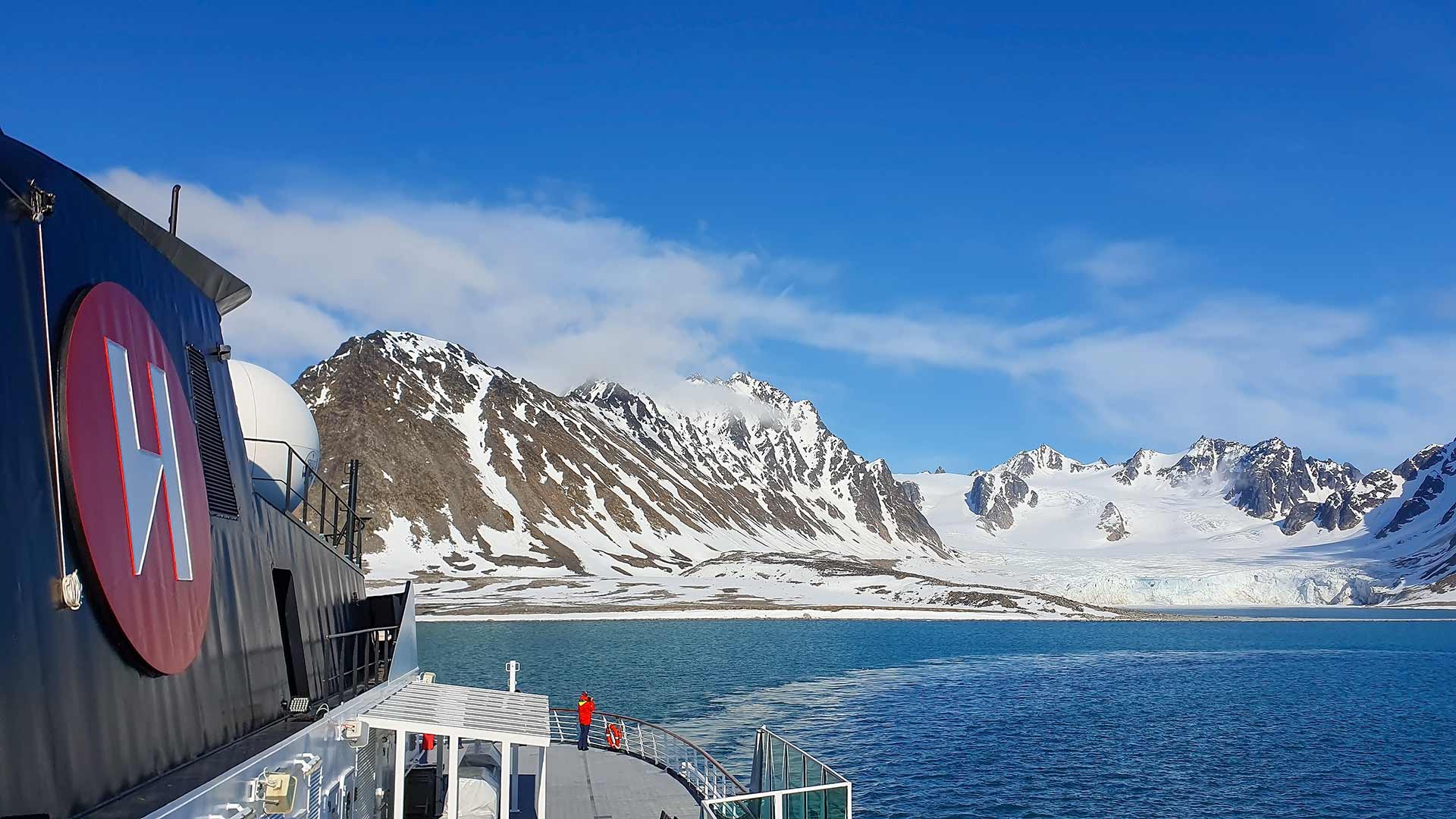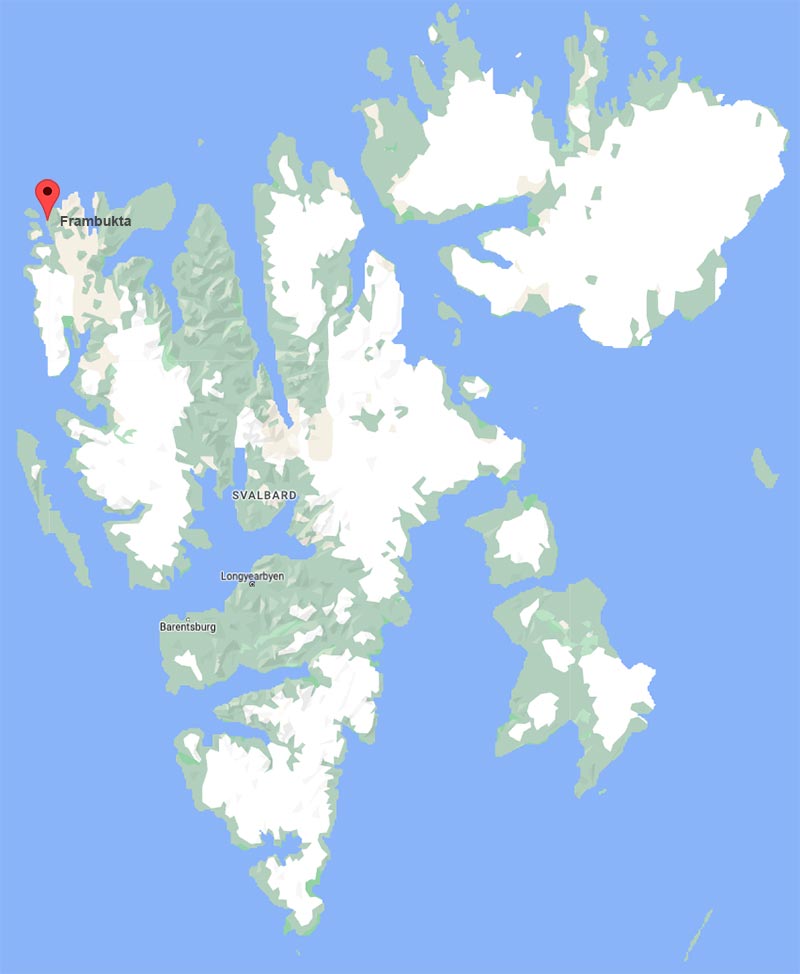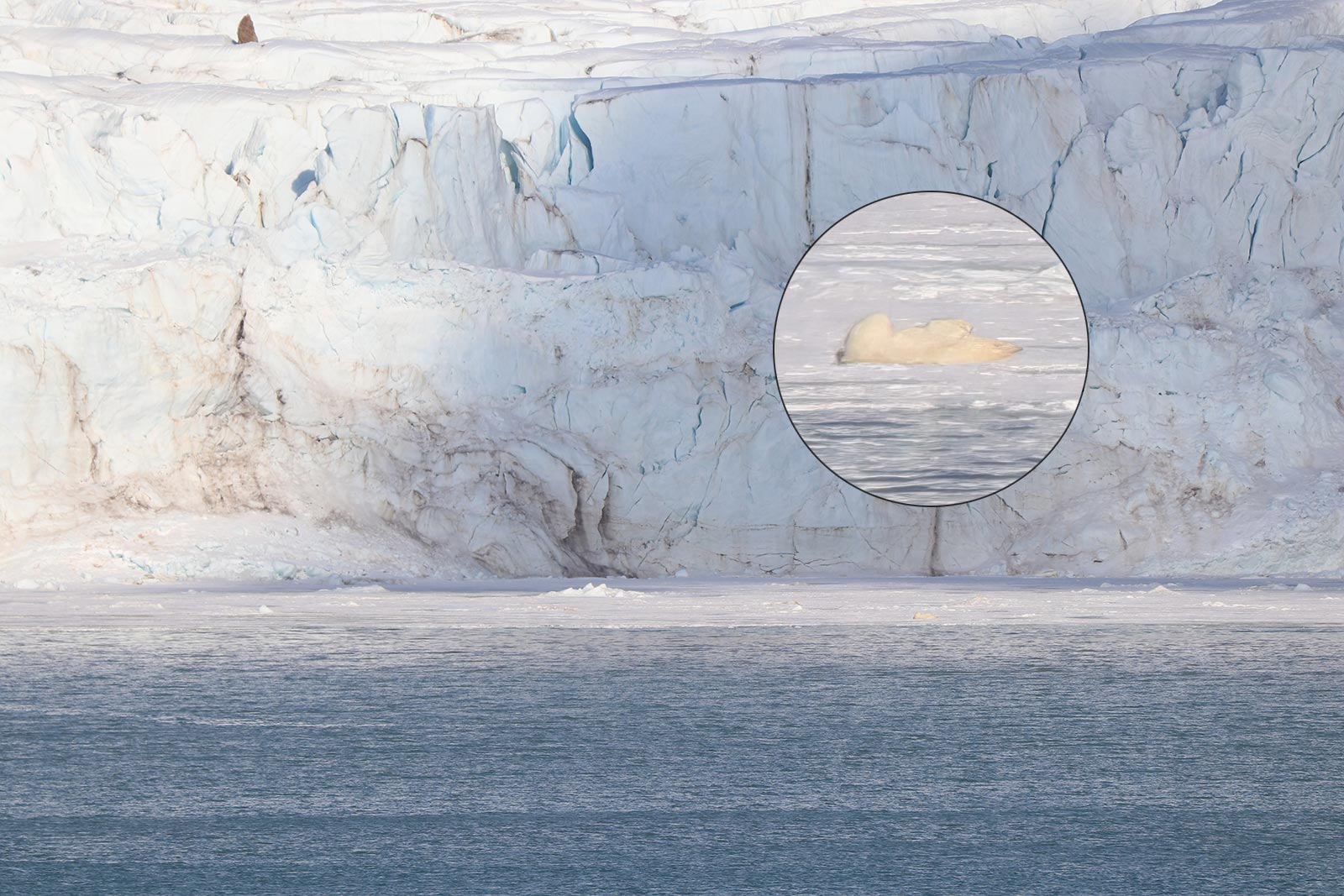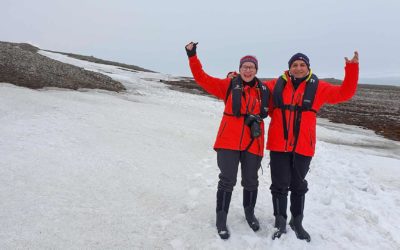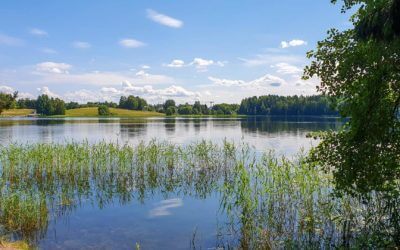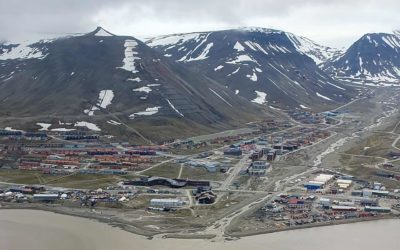The weather cleared up completely and we continued our journey further north where we saw the first walruses and also our first polar bear.
After our visit to Ny-Ålesund, we sailed further north. It had been cloudy earlier, but the sky cleared completely and for the first time we saw a beautiful blue sky. We sailed along the coast of Spitsbergen below the island of Moseøya to the small bay of Frambukta, almost directly opposite Amsterdamøya (Amsterdam Island). This island was the center of the Dutch whaling industry until the middle of the 17th century, when the whale oil refineries in the settlement of Smeerenburg were in full operation.
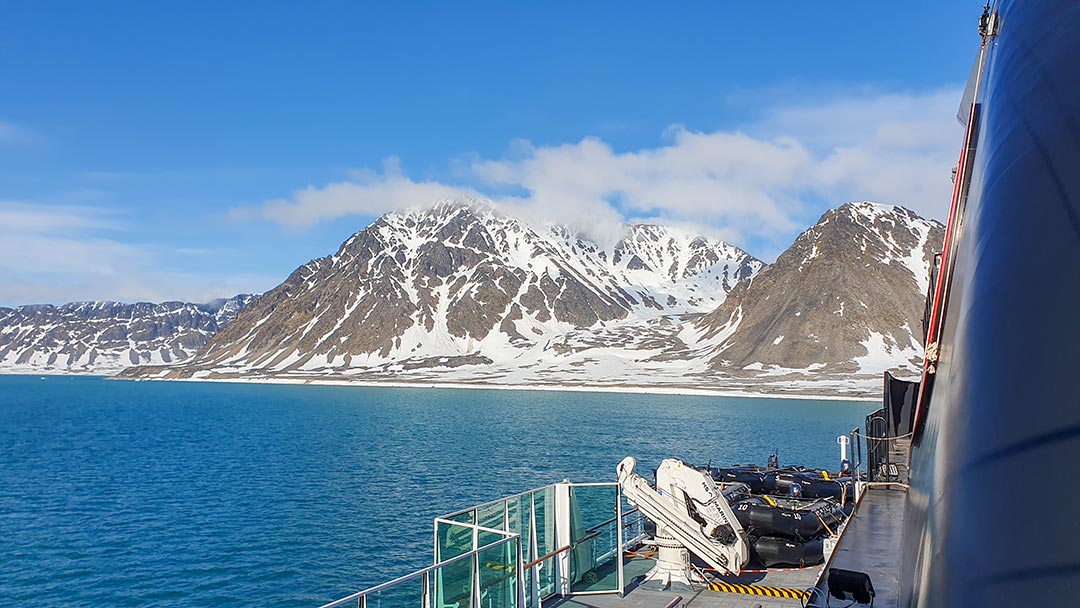
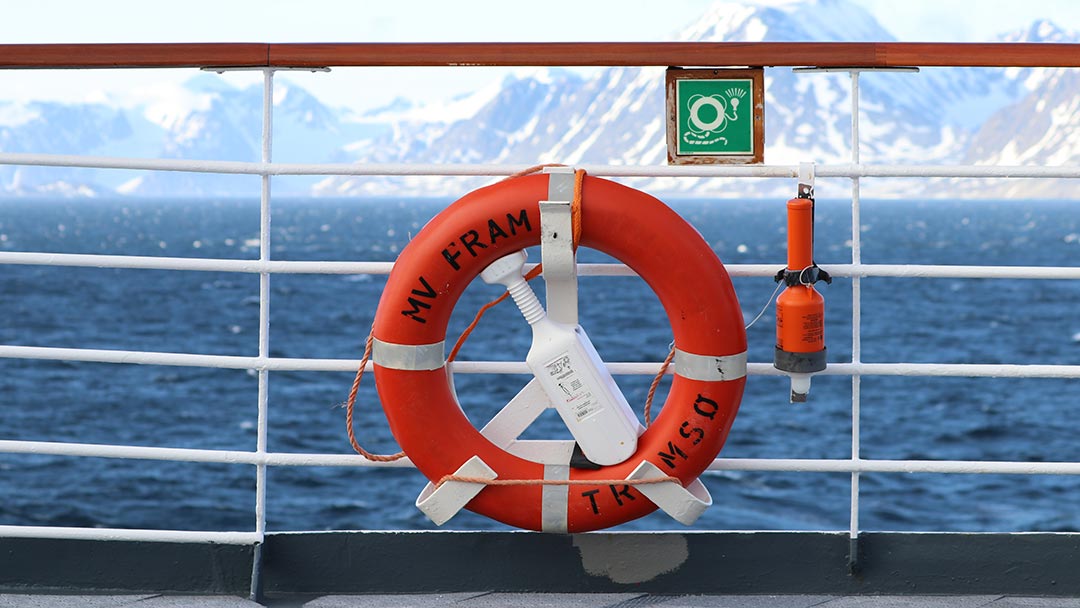
At some distance from the shore, our ship stopped so that we could watch a colony of walruses sunbathing on the beach. In Svalbard, it is a rule that animals should always be observed from an appropriate distance, and that they should not be chased or disturbed.
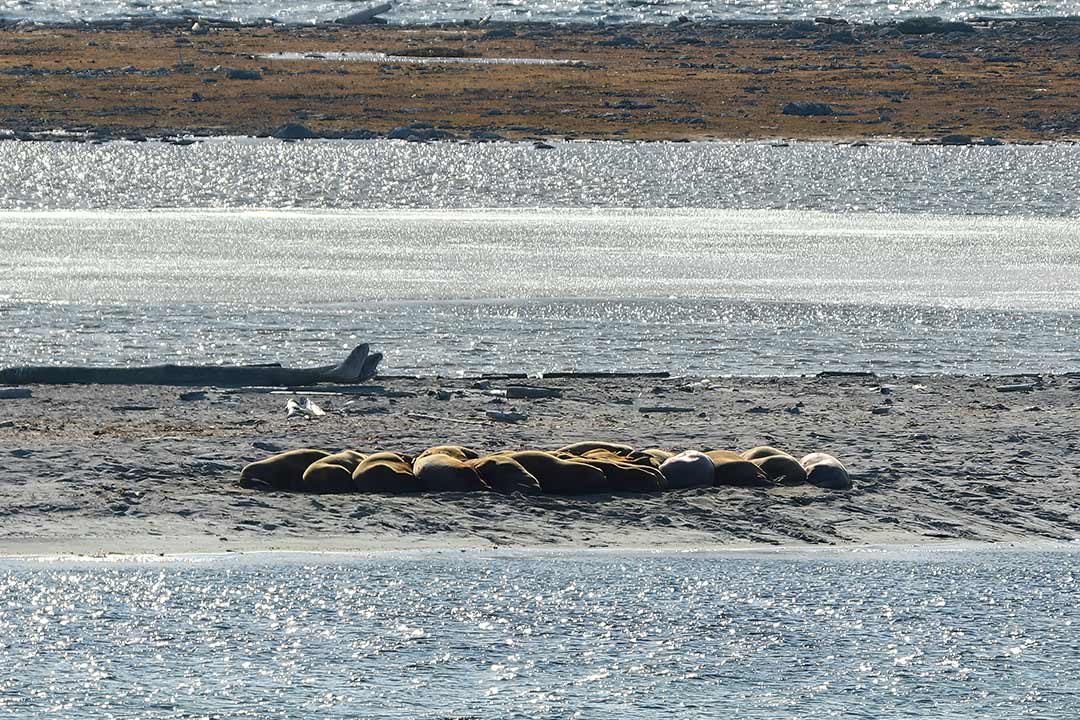
Polar Bear
We were on deck enjoying the beautiful weather and the view when a passenger, after peering through his binoculars for a long time, said he thought he saw a polar bear lying on the shore in front of us. The expedition photographer joined in with a telephoto lens and confirmed that it was indeed a polar bear lying on its back on the ice, enjoying the sunshine. By now it was time for dinner and many people went to the restaurant to eat. We stayed on deck, hoping the polar bear would get up so we could get a better look at him. He did. After a while, he got up and walked calmly along the glacier. We had seen our first polar bear in the wild! It was from quite a distance and I couldn’t get any closer with my 300mm lens. We were so hoping to see a polar bear and on the second night on board we did.
Spot the polar bear. Click on photo to enlarge. That’s how hard it can be to spot a polar bear ashore from a ship.
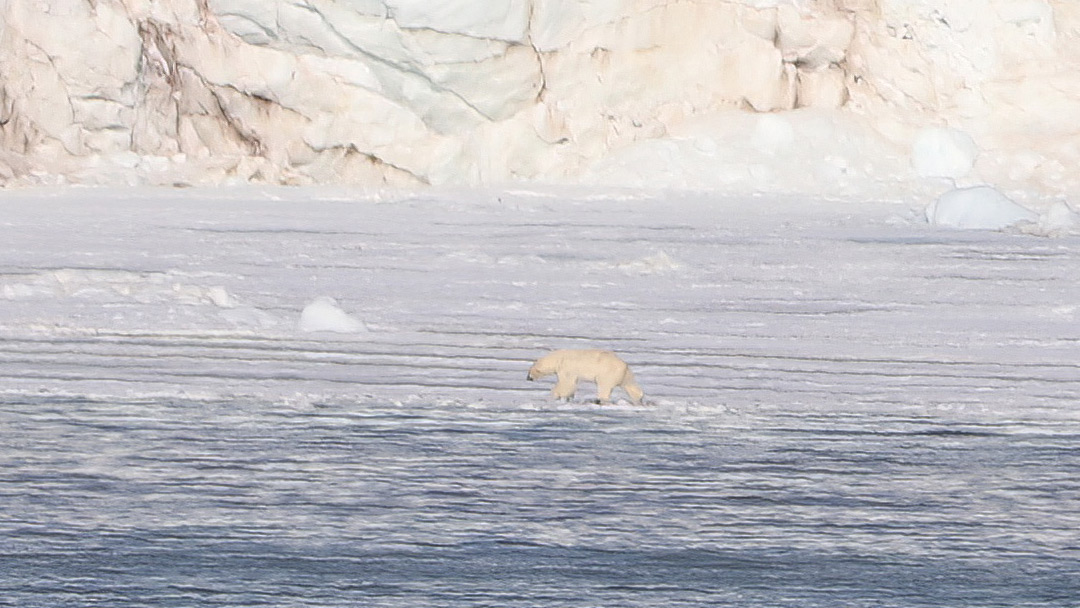
There are about 3,000 polar bears living on the islands of Svalbard and in the area around the Barents Sea. It is estimated that more than 30,000 polar bears were killed by commercial hunters in the century before the 1973 Agreement on the Conservation of Polar Bears. The population subsequently increased, but is now threatened by retreating ice and increasing habitat loss. For now, the Svalbard polar bears seem to be doing well, they are reproducing and a change in their feeding habits has been observed. Ringed seals are still a favorite, but they also increasingly hunt harbor seals, sometimes snatch a reindeer or even a walrus, and raid bird colonies.
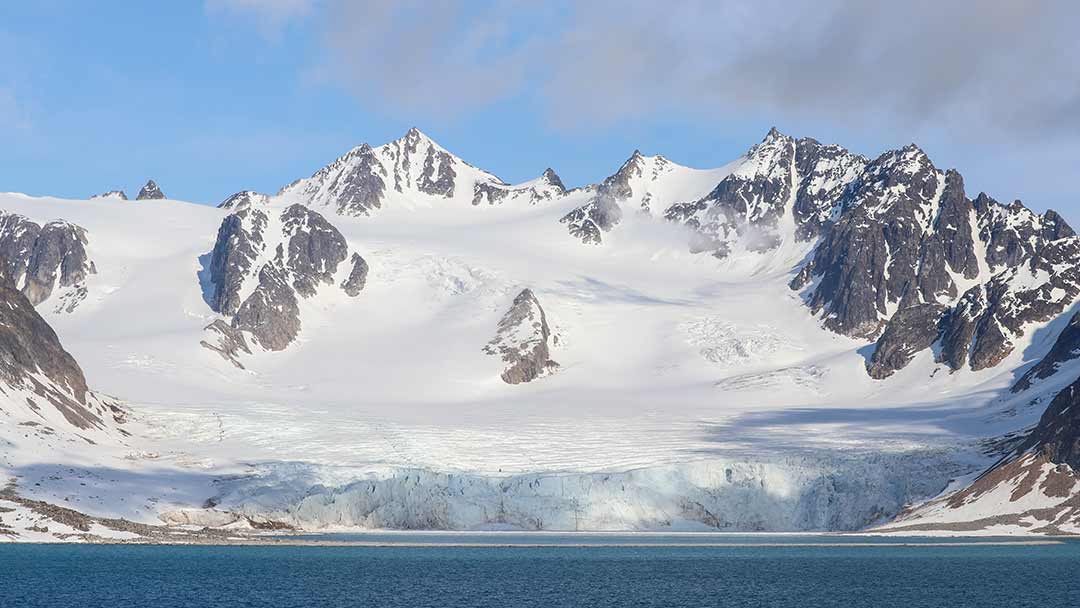
The glacier where the polar bear was spotted.
Continuation of the trip
We were now well to the north, close to the 80 degrees north latitude that we all wanted to reach. During our expedition leader’s evening talk on the first night on board, he had already told us that the pack ice was still too far south and that we would not be able to complete the circumnavigation of Svalbard. Now he went into more detail and showed the ice chart. Last year, it was possible to complete the circumnavigation in early June. Fortunately, he came up with an alternative plan that everyone was excited about.
Instead of going to 80°N on the west coast of Svalbard and losing a lot of time among the drift ice, we would sail back south, around the southern tip, and explore the east coast, pushing as far north as possible along that side. The two MS Fram expedition cruises that departed before us in June had only stayed on the west coast because there was still too much pack ice on the east coast. We were more fortunate and eventhough we would not be able to complete the full circumnavigation, but we would be able to travel the rest of the planned route from the south.
The weather in Svalbard is very unpredictable, and on the way south the sky clouded over again. The video below was filmed at 8:30 p.m.
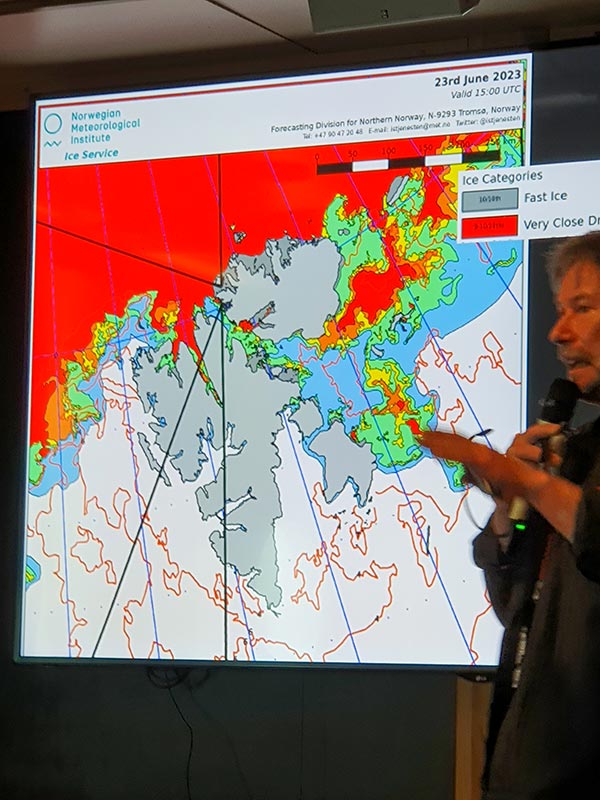
Expeditieleider Tomski with the ice chart.

